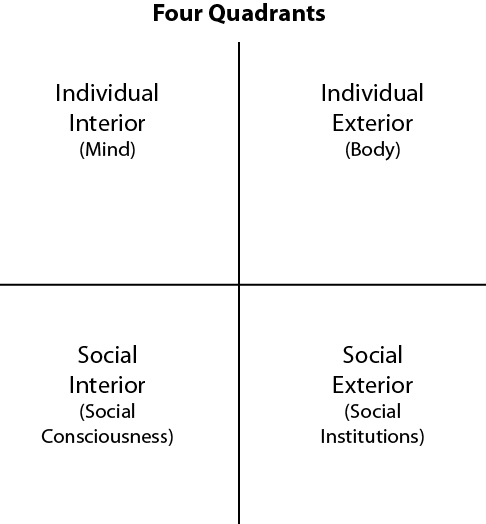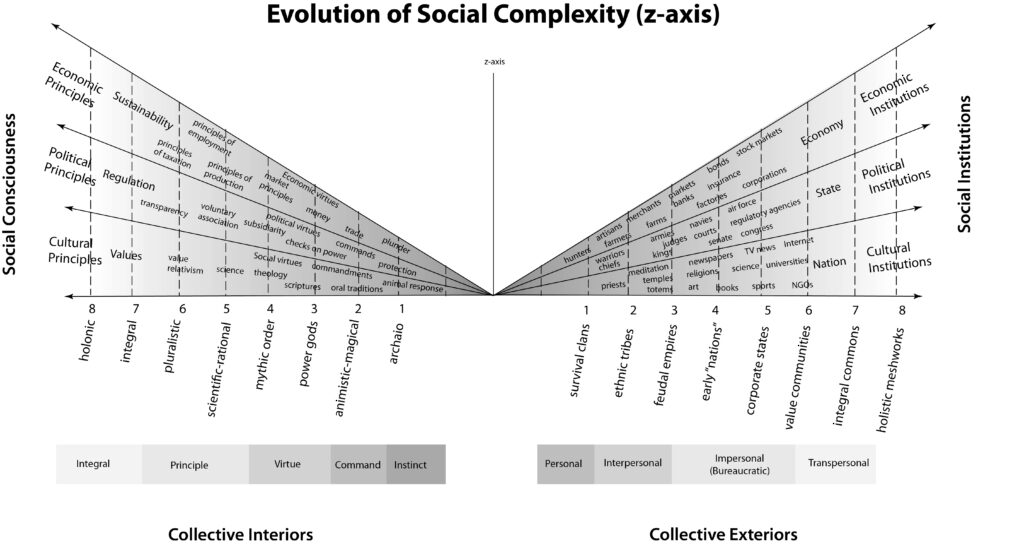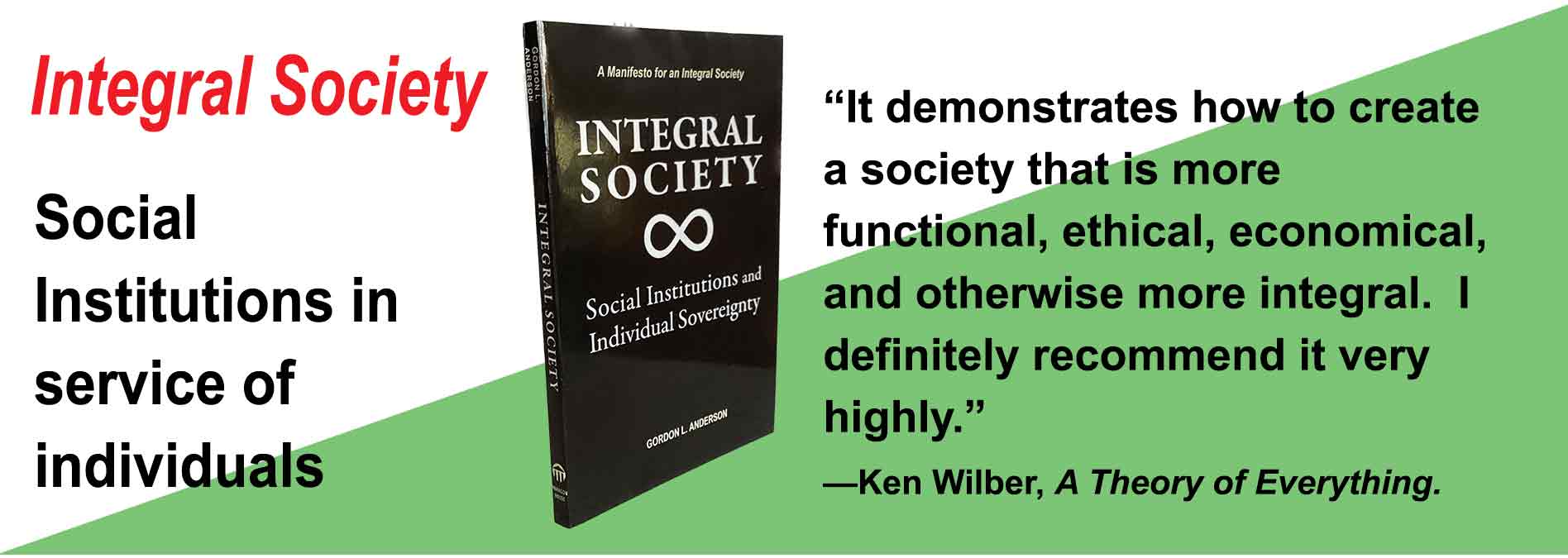The pioneering work in understanding the evolution of society is Ken Wilber’s A Theory of Everything (2000). His diagrams illustrating the evolution and complexity of integral consciousness and society enable an integral understanding of “everything” humans perceive, conceive, and do. He describes this in terms of four quadrants.

Quadrants: These quadrants divide individuals from social groups on one axis, and consciousness from existence on another axis. The upper left quadrant, the individual’s mind or consciousness, is in the domain of spirituality and psychology. The upper right includes, health, nutrition, and physical well-being. The lower left would include the study of language, social meaning, collective goals, and common worldview. The lower right includes external social reality: things like highways, banks, governments, manufacturing plants, markets, and churches.
Growth and Development: Everything goes through phases of growth, development, and complexity. This is true of all quadrants. Individuals grow from total dependency to wisdom over decades. Our collective consciousness evolves in all areas from philosophy, to governance, to engineering as social institutions become more complex. External society has developed from hunting and gathering to the production of smartphones and the exploration of space. Individuals eventually die, but societies can transcend the lives of individuals. Civilizations have also risen and fallen as their social institutions have developed and become corrupted. A science of the health of social institutions (lower right quadrant), that parallels the field of medicine (upper right quadrant). Social institutions, like individual humans, might die. Sustainability is thus only possible at a meta-system level.
The Evolution of Social Complexity: Wilber described each level of social development of having an integral aspect to it, but at a lower level of consciousness. He called these levels “holons.” To this point, most spiritual teachers and psychologists have emphasized the development of the the individual. Wilber, following Clare Graves, went beyond this to explain the evolution of social consciousness in terms of “memes,” which relates to the study of the lower left quadrant.
Integral society involves the interrelationship between social consciousness and social institutions. This can be described as the mind/body relationship for societies. To illustrate this complexity, the z-axis can be added to Wilber’s two dimensional illustrations. On the z-axis, society can be studied in terms of three distinct spheres. These three spheres each are rooted in a different foundational principle—love in culture, law in governance, and exchange in the economy. In an integral society the institutions in these spheres must have the appropriate freedoms and restrictions so as to best perform their function of service to society while being restricted from attempting to dominate or oppress other institutions or citizens. The study of these relationships and boundaries can be considered the science of integral society.
The science of integral society includes cultural sciences, economic sciences, and the science of governance.

